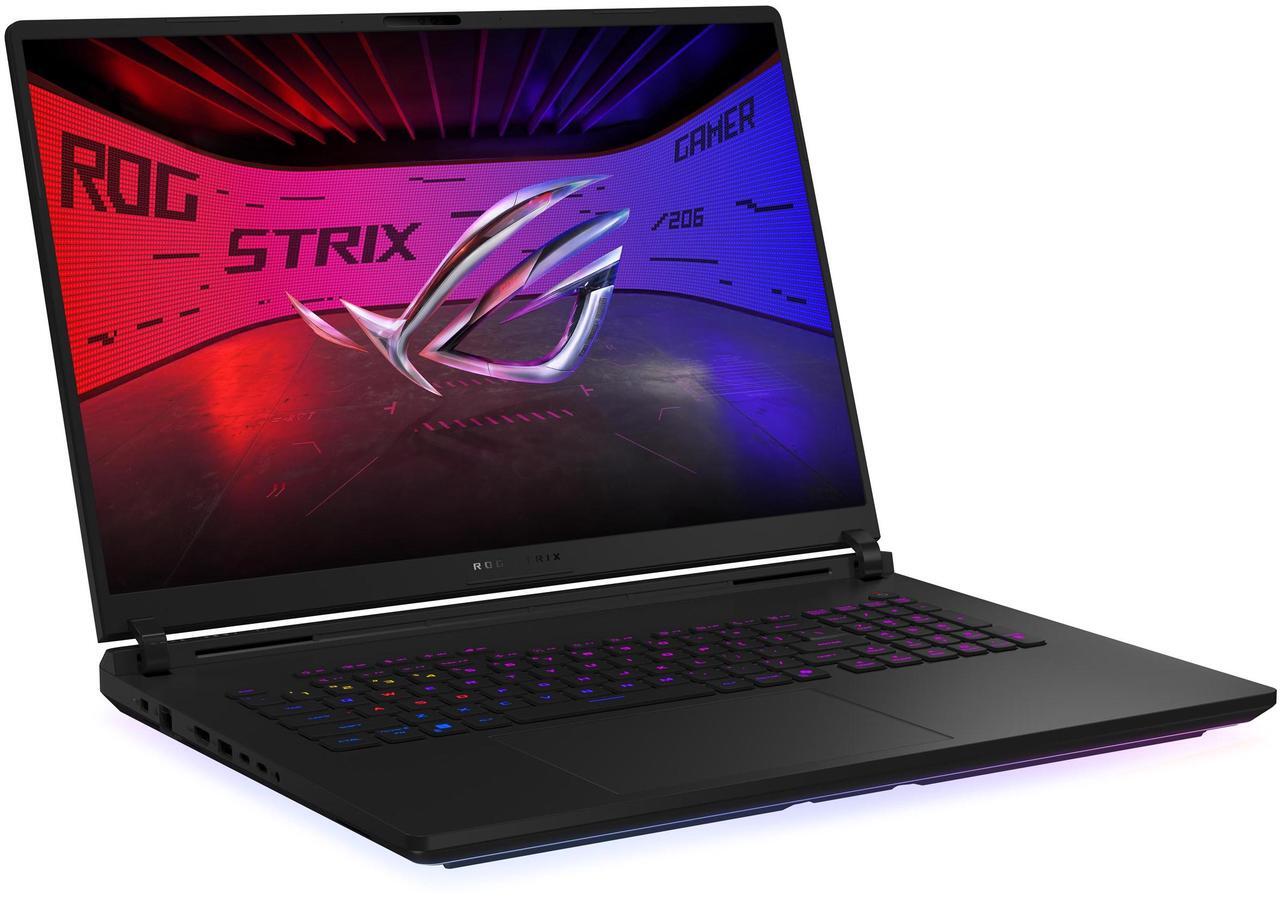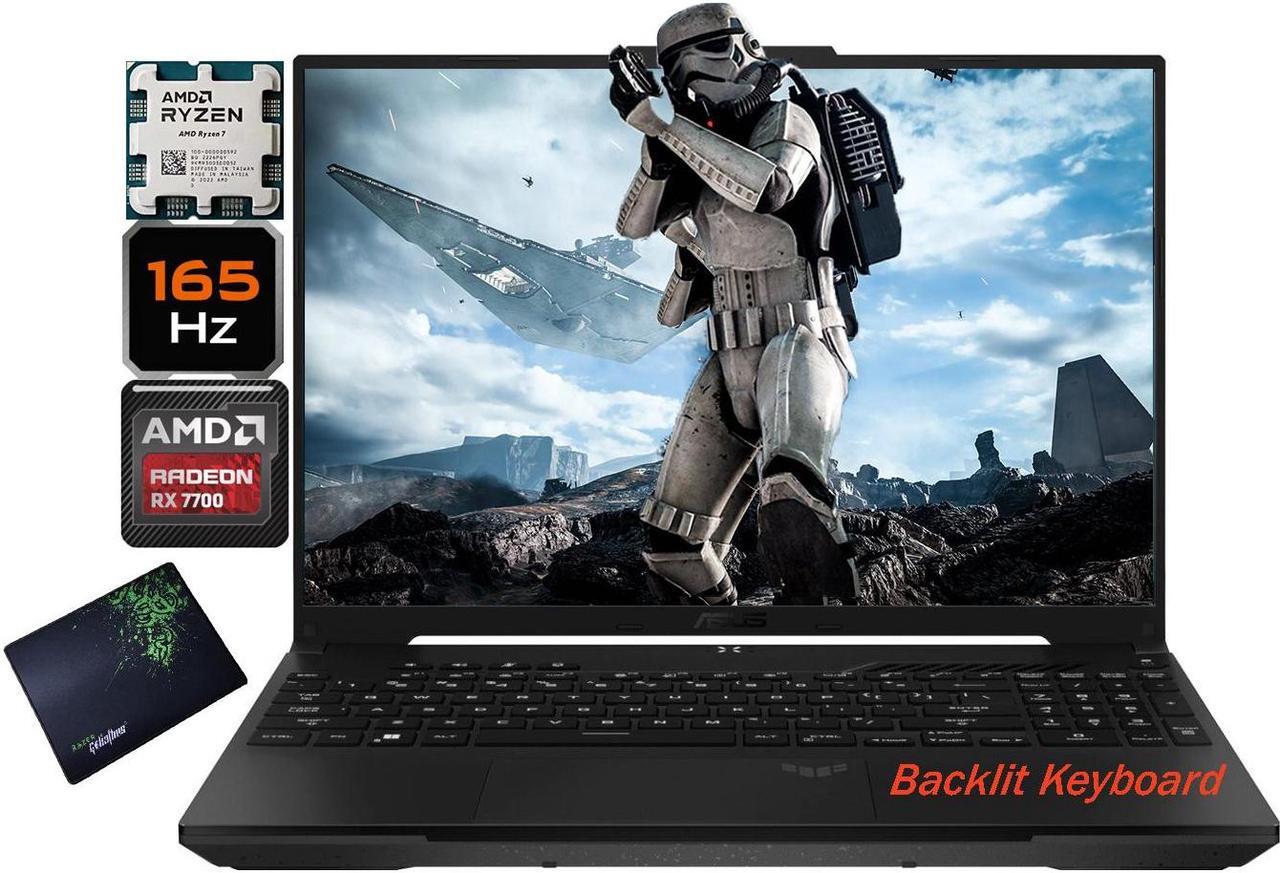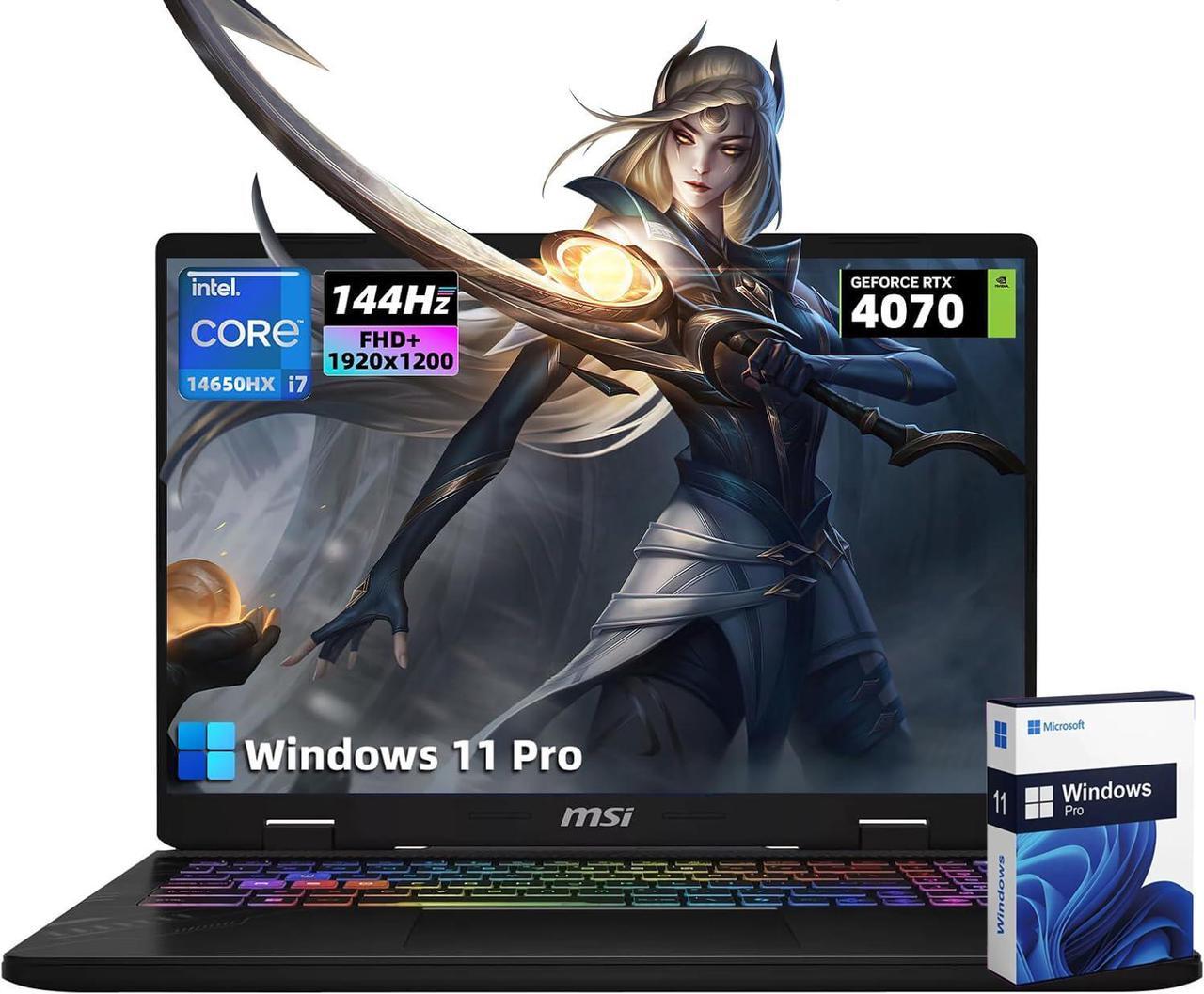
In 2025, gaming laptops deliver desktop-class performance in sleek, portable designs—but with countless models on Newegg and beyond, picking the right one can feel daunting.
This guide draws on expert insights and real-world benchmarks to walk you through key factors like GPU, CPU, display quality, cooling, battery life, and upgrade paths when choosing a gaming laptop. It also highlights standout options at every price point, helping you find the perfect fit for your budget, playstyle, and future needs.
1. Know Your Playstyle
First, define how you’ll use your laptop. Features and performance begin to vary depending on whether you’re just entering the world of gaming, or if you’re planning on opening demanding applications on the daily. Even the games you play change the laptop most suited for you!
- Competitive Shooters (Valorant, CS:GO, Fortnite)
First-person shooter games demand speed and precision, so prioritize ultra-high refresh rates (144 Hz-360 Hz) along with a mid-range GPU plus 6- to 8- core CPU pairing that can easily push 200+ fps, enhancing your visual experience throughout the game while giving you a performance edge.

ASUS TUF Gaming A16 16″ 165Hz WUXGA AMD Ryzen 7
- AAA Open-World Titles (Cyberpunk 2077, Elden Ring)
If you’re an AAA open-world game enthusiast, search for powerful GPUs—such as NVIDIA’s RTX 40/50 series or AMD’s RX 7000 mobile cards—with 8–16 GB of VRAM, ensuring your game runs smoothly. Using a sharper 1440p or 4K display brings these detailed worlds to life.

MSI Crosshair 16″ FHD+ Gaming Laptop
- Hybrid Use (Streaming, Editing)
If you record or livestream gameplay, lean on an 8- to 12-core CPU like the Intel Core Ultra 9/i9 or Ryzen 9. Pair it with 32 GB of RAM and a high-speed SSD to avoid stutters, multitask smoothly, and produce high-quality media.
2. Core Components Matter
- Processor (CPU):
• Entry to Mid-Tier Gaming: CPUs with 6–8 cores, like the Intel i5-13500H and the Ryzen 7 7840HS, are the top choices for modern games, offering excellent performance. They deliver stability and smooth gameplay at high resolutions, ideal for 1080p and 1440p gaming.
• High-End / Content Creation: For demanding tasks like video editing, high-end gaming, and streaming, opt for 8-12 core CPUs such as the Intel i7-13700H and Ryzen 9 7940HS. They can handle intensive multitasking and maintain smooth frame rates while compiling large sets of data. - Graphics (GPU):
• 1080p High-Refresh: If you prioritize performance over advanced settings, the NVIDIA RTX 4050/4060 or AMD RX 7600M are excellent GPUs for great value.
• 1440p+ / Ray Tracing: As 1440p gaming and technologies like ray tracing grow in popularity, GPUs such as the NVIDIA RTX 4070-4090 and AMD RX 7700M+ offer the power needed for enhanced graphics and smooth frame rates. They also support AI-powered rendering techniques like DLSS and FSR.
• VRAM: VRAM amount is critical for graphically intensive tasks and gaming at high resolutions. 8 GB is the minimum, satisfying 1440p gaming. However, 12-16 GB future-proofs against next-gen textures, allowing smooth 1440p and 4K gaming, ensuring an immersive gaming experience. - Memory & Storage:
• RAM: 16 GB DDR5 in dual-channel configuration is the sweet spot for most gamers and creative professionals looking for steady and balanced performance. For more intense workloads, like running virtual machines or performing heavy editing, consider 32 GB.
• SSD: PCIe 4.0 or 5.0 NVMe drives range from 512 GB to 2 TB and deliver ultra-fast boot times and game loads, perfect for users managing large files and media.
3. Display: Speed vs. Clarity
- Refresh Rate & Resolution:
• 1080p @ 240–360 Hz: Best for esports enthusiasts and competitive FPS gaming, where speed and response time matters most.
• 1440p @ 165–240 Hz: Best choice if you want sharper visuals balanced with speed.
• 4K @ 120 Hz+: Best for cinematic visuals in detailed games but requires high-end GPUs to run smoothly. - Panel Technology:
• IPS: Wide viewing angles, accurate colors, not the top choice for competitive gaming with slower response time.
• Mini-LED vs. OLED: Mini-LED displays offer local dimming for improved contrast and higher brightness, but they tend to be more expensive. OLED screens, on the other hand, provide deep blacks and vibrant contrast—ideal for immersive single-player experiences—with fast response times and a similarly high cost - Color & Brightness:
For accurate colors and rich visuals while gaming, aim for a display with ≥100% sRGB. This is critical if your laptop is for creative work as well, such as editing, video production, or streaming. Also, look for a brightness level of at least 300 nits for visible and enhanced details during indoor use.
4. Cooling & Chassis Design
The longevity of your gaming laptop is only as good as the cooling and chassis design it is built with. With the right thermal design, you are guaranteed sustained performance and controlled noise levels.
- Thermal Solutions:
• Look for vapor chambers and liquid-metal thermal interfaces that bring an advanced cooling system to even mid-range laptops. These features help maintain peak performance during long gaming sessions.
• Multiple heat pipes and fans in your system can manage heat across the CPU and GPU, supporting heavy performance for longer. - Materials & Noise:
• Aluminum or magnesium-alloy shells dissipate heat from the laptop’s internal components better than plastic. They often have a more premium look and feel but may be more expensive.
• Check reviews for fan noise. Some systems run cool but loud, or vice versa. - Ergonomics:
A sturdy hinge keyboard with at least 1.5 mm travel paired with a responsive trackpad improves not only productivity but your overall gaming and usage experience.
5. Portability & Battery
- Size & Weight:
• 13–14″ ultraportables (<5 lbs): Perfect portable fit for busy schedules but offer limited cooling.
• 17″ “desktop replacements” (5–7 lbs): Heavier choice, delivers larger screen size and space for more advanced components. - Battery Capacity:
• 70–100 Wh batteries typically gives 5-8 hours of productivity use (browsing, video).
• Gaming can drain battery by 50–70%—keep the charger handy. - Charging Options:
• Fast charging: Some systems can go from 0→50% in under 30 min.
• USB-C Power Delivery: Consider on-the-go charging for your gaming laptop with power banks or adapters, useful for travel.
6. Connectivity Essentials & Upgradability
- Ports:
• Thunderbolt 4/USB4 for docks, displays, and external GPUs.
• HDMI 2.1/Mini-DisplayPort for high-refresh external monitors.
• Multiple USB-A, Ethernet, and SD slots allow you to connect a wide range of devices, including gaming gear and streaming setups. - Upgrade Path:
• User-accessible M.2 SSD slots let you add storage.
• SO-DIMM slots in your gaming laptop let you boost RAM later—verify before you buy. - Network:
Wi-Fi 6E and 2.5 Gb Ethernet keep online play smooth, even on busy networks.
7. Budget Tiers & Quick Comparison
| Tier | GPU Tier | CPU Tier | RAM / Storage | Display | Use Case |
|---|---|---|---|---|---|
| Entry / Value | RTX 4050 / RX 7600M | i7 / Ryzen 7 | 16 GB / 512 GB SSD | 1080p @ 144 Hz | Casual gaming / esports on a budget, students |
| Mid-Range | RTX 4060–4070 / RX 7600–7700M | i9 / Ryzen 9 | 16–32 GB / 1 TB SSD | 1440p @ 165–240 Hz | Balanced gaming & productivity |
| Premium / Flagship | RTX 4080–4090 / RX 7800M+ | Core Ultra 9 / Ryzen AI | 32 GB+ / 1–2 TB SSD | 2.5K–4K @ 120–240 Hz | AAA, ray tracing, content creation |
8. Top Picks for 2025
- Best All-Rounder: Razer Blade 16 – Ultraportable, high-end GPU, OLED option, great for both gaming and creative work.
- Pure Performance: Lenovo Legion Pro 7i Gen 9 – Desktop-class performance and cooling.
- Best Value: Lenovo Legion Pro 5i Gen 9 – Excellent performance per dollar in mid-range tier.
- Budget Champ (AMD): Asus TUF A15 – Strong battery life, decent specs at an affordable price.
- Budget Champ (Intel): Dell G16 – Bigger screen for immersive gaming, reliable cooling.
- Portability King: Asus ROG Zephyrus G14 – Lightweight, compact, surprisingly powerful.

